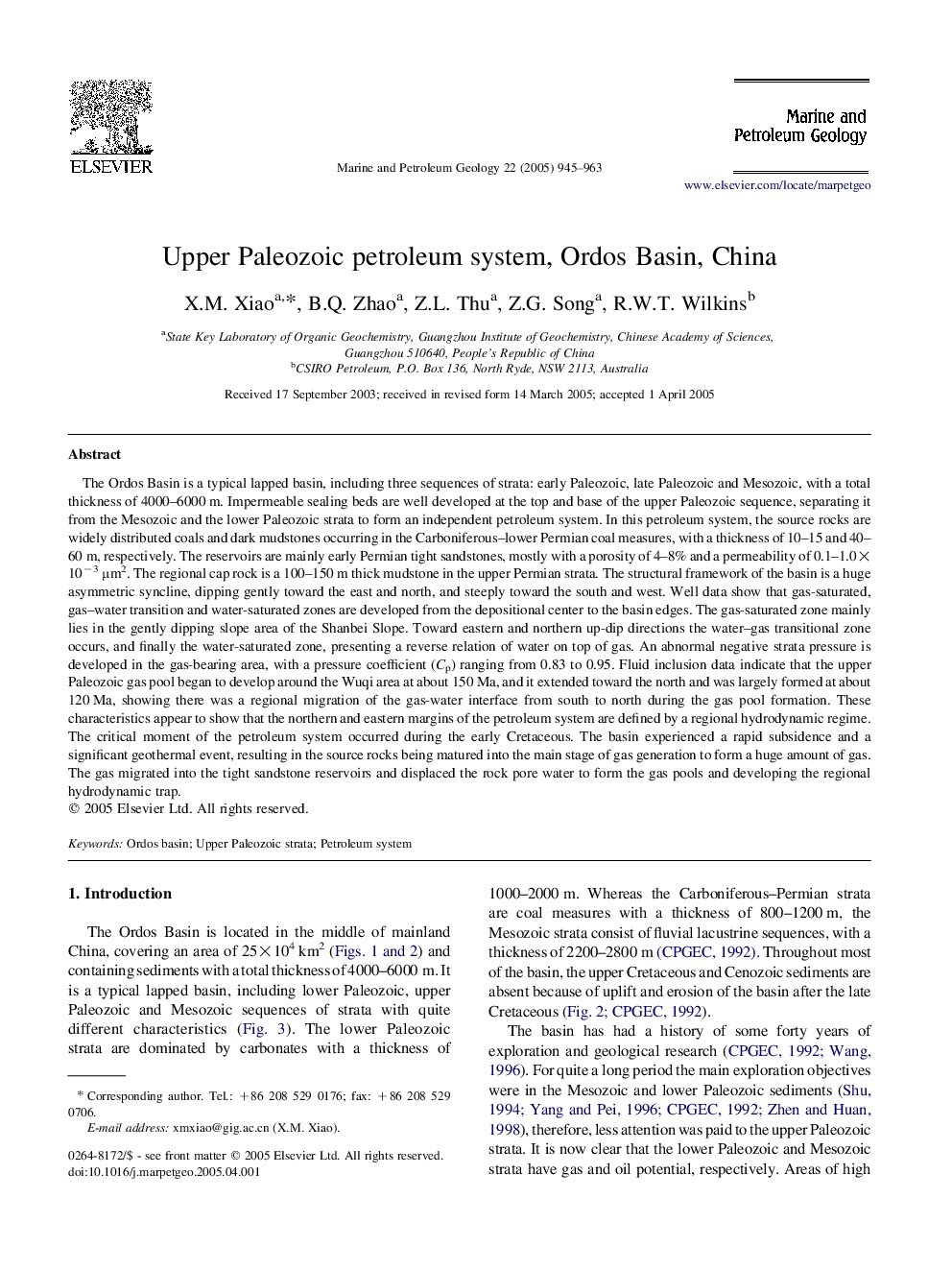| Article ID | Journal | Published Year | Pages | File Type |
|---|---|---|---|---|
| 9528392 | Marine and Petroleum Geology | 2005 | 19 Pages |
Abstract
The Ordos Basin is a typical lapped basin, including three sequences of strata: early Paleozoic, late Paleozoic and Mesozoic, with a total thickness of 4000-6000 m. Impermeable sealing beds are well developed at the top and base of the upper Paleozoic sequence, separating it from the Mesozoic and the lower Paleozoic strata to form an independent petroleum system. In this petroleum system, the source rocks are widely distributed coals and dark mudstones occurring in the Carboniferous-lower Permian coal measures, with a thickness of 10-15 and 40-60 m, respectively. The reservoirs are mainly early Permian tight sandstones, mostly with a porosity of 4-8% and a permeability of 0.1-1.0Ã10â3 μm2. The regional cap rock is a 100-150 m thick mudstone in the upper Permian strata. The structural framework of the basin is a huge asymmetric syncline, dipping gently toward the east and north, and steeply toward the south and west. Well data show that gas-saturated, gas-water transition and water-saturated zones are developed from the depositional center to the basin edges. The gas-saturated zone mainly lies in the gently dipping slope area of the Shanbei Slope. Toward eastern and northern up-dip directions the water-gas transitional zone occurs, and finally the water-saturated zone, presenting a reverse relation of water on top of gas. An abnormal negative strata pressure is developed in the gas-bearing area, with a pressure coefficient (Cp) ranging from 0.83 to 0.95. Fluid inclusion data indicate that the upper Paleozoic gas pool began to develop around the Wuqi area at about 150 Ma, and it extended toward the north and was largely formed at about 120 Ma, showing there was a regional migration of the gas-water interface from south to north during the gas pool formation. These characteristics appear to show that the northern and eastern margins of the petroleum system are defined by a regional hydrodynamic regime. The critical moment of the petroleum system occurred during the early Cretaceous. The basin experienced a rapid subsidence and a significant geothermal event, resulting in the source rocks being matured into the main stage of gas generation to form a huge amount of gas. The gas migrated into the tight sandstone reservoirs and displaced the rock pore water to form the gas pools and developing the regional hydrodynamic trap.
Keywords
Related Topics
Physical Sciences and Engineering
Earth and Planetary Sciences
Economic Geology
Authors
X.M. Xiao, B.Q. Zhao, Z.L. Thu, Z.G. Song, R.W.T. Wilkins,
